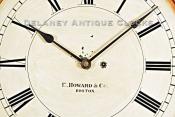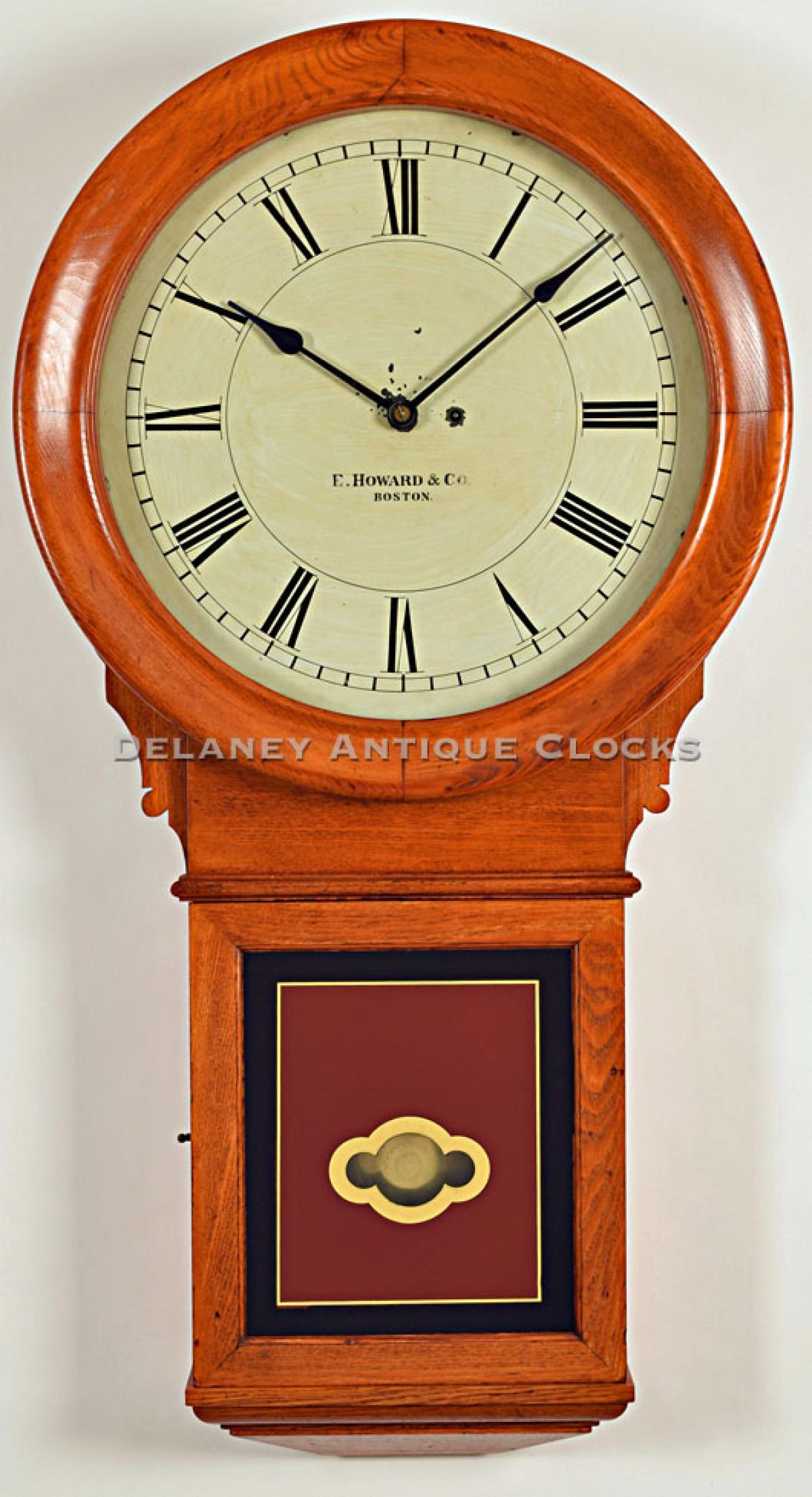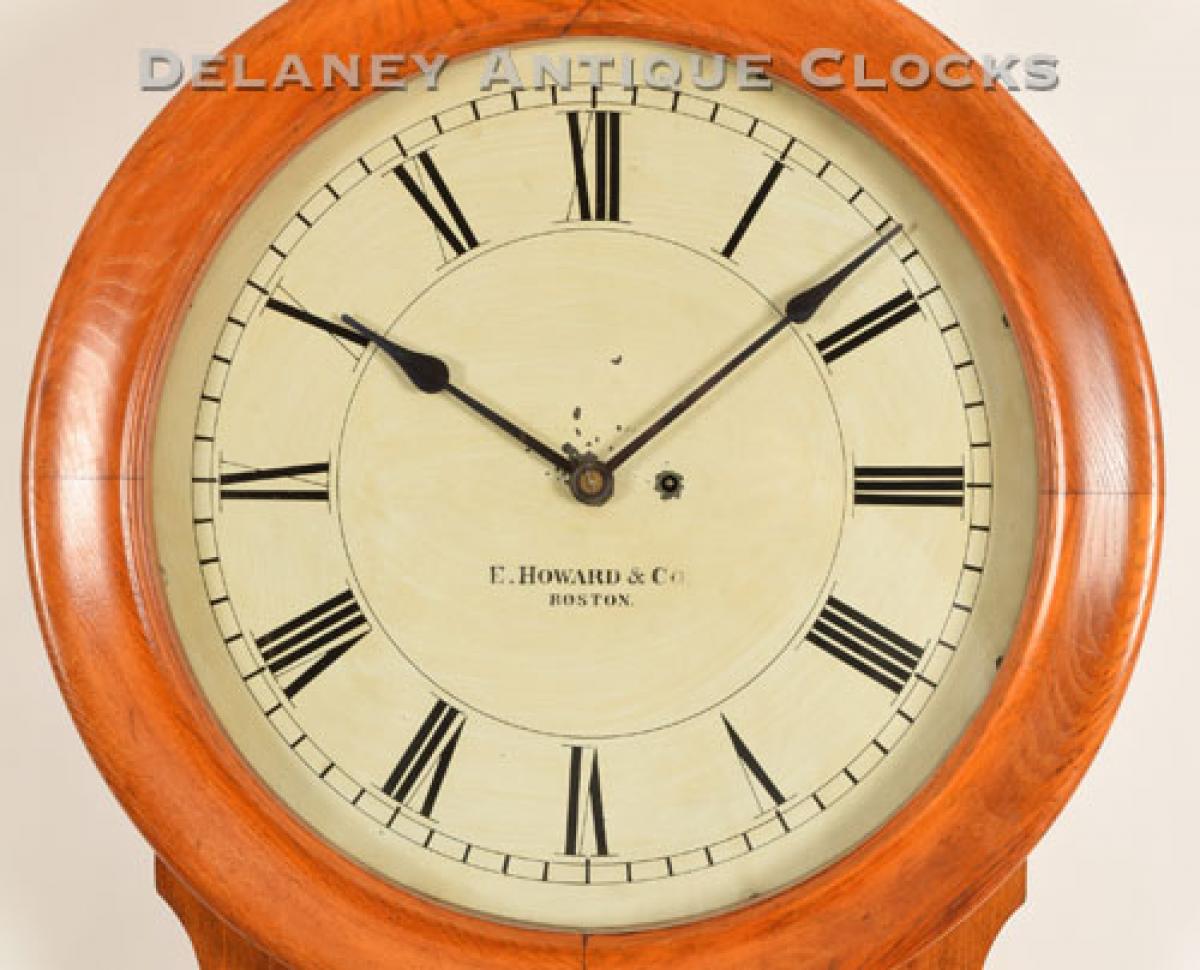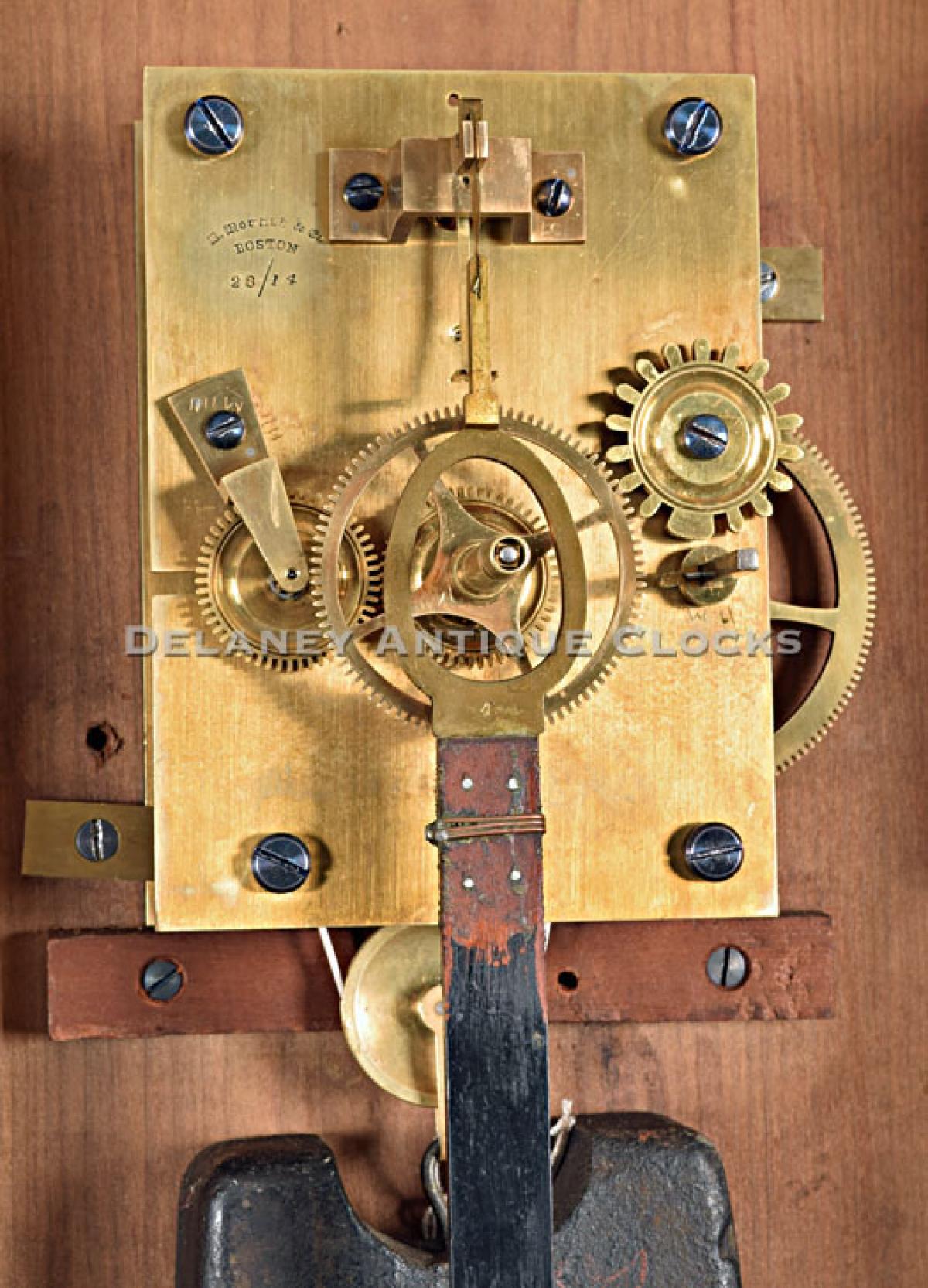E. Howard & Co., Boston, MA. Model No. 70-20. (20 Inch dial.) Wall clock. UU-41.
The E. Howard & Company offered five variations of dial sizes of the Model 70 form. This example is the second of the largest of the five and is seldom seen. This is the second example I have ever had the opportunity to buy. This clock displays the time on a dial that measures a full 20 inches in diameter. The oak-constructed case measures approximately 48 inches inches long.
The Model 70 was successfully sold. It was used extensively in the Boston Public School System, in the various Boroughs of Greater New York, and in many other places as the Standard School Clock. It is reported that the United States Government specified it as the “Standard for all Public Buildings.” One would also see this model in many of the nation’s railroad stations. Some of these included the Elevated Railroad Stations of New York City, The Pennsylvania Railroad Company, The Central Railroad of New Jersey, the West Shore Railroad of Boston & Albany, and nearly all Railroad Companies throughout the United States, Mexico, and Canada.
This Model Number 70 is in good working order. The case is constructed in oak and exhibits an excellent rich color. The reverse-painted tablet is done in the traditional Howard colors of black, red, and gold. This tablet has been professionally repainted. The 20-inch dial is painted on zinc and retains the Maker’s original signature, which is formatted in block lettering. The size of this dial makes this an unusual clock. The weight-driven movement is constructed in brass and is of very good quality. The Maker’s name is die-stamped into the front plate. The number 28/14 is also stamped in a similar location. The plates are heavily cast and are supported with four brass posts. The steel shafts support the brass gearing. The escapement is a recoil format. The movement is weight-powered. The winding is stopped at the top via a Geneva stop winding arrangement. The cast iron weight in this example is stamped with “2.” The pendulum rod is made of wood that supports a zinc bob covered in brass for compensation and decoration. The brass surface is decorated with concentric rings. This clock is an excellent timekeeper designed to run for eight days on a full wind. It was made circa 1900.
Inventory number UU-41.
The E. Howard & Company succeeded the Howard & Davis firm in 1857. The Howard & Davis firm was comprised of Edward Howard and David Porter Davis and was established in 1842 in Roxbury, Massachusetts. Both men had just completed their clock apprenticeship under the guidance of Aaron Willard Jr in Boston. The Howard & Davis firm made high-grade clocks, precision balances, sewing machines, fire engines, and watches. After the dissolution of Howard & Davis, Edward Howard became Boston's leading manufacturer of weight-driven residential and commercial clocks. The firm also made a large number of tower clocks and watchman and salve clock systems. These sold well in the last quarter of the 1800s.
It has been said that the E. Howard Clock company never made an inexpensive clock, and everything they made was of very good quality. As a result, Howard clocks have become very collectible and are prized by their owners. Today, the E. Howard name enjoys outstanding name recognition.
For a more in-depth reading of Edward Howard and his various businesses, please read "Willard's Patent Time Pieces," written by Paul Foley.














